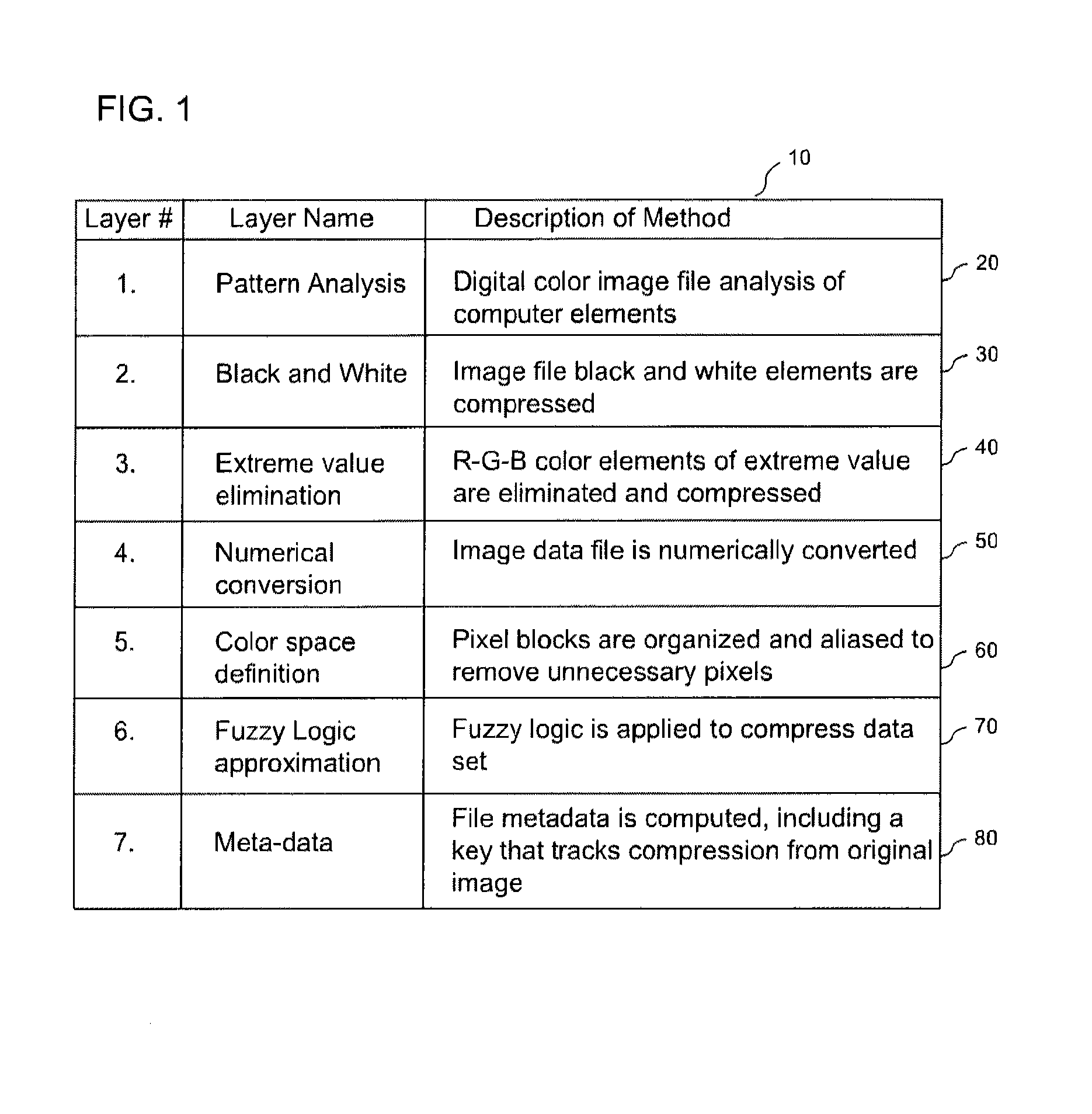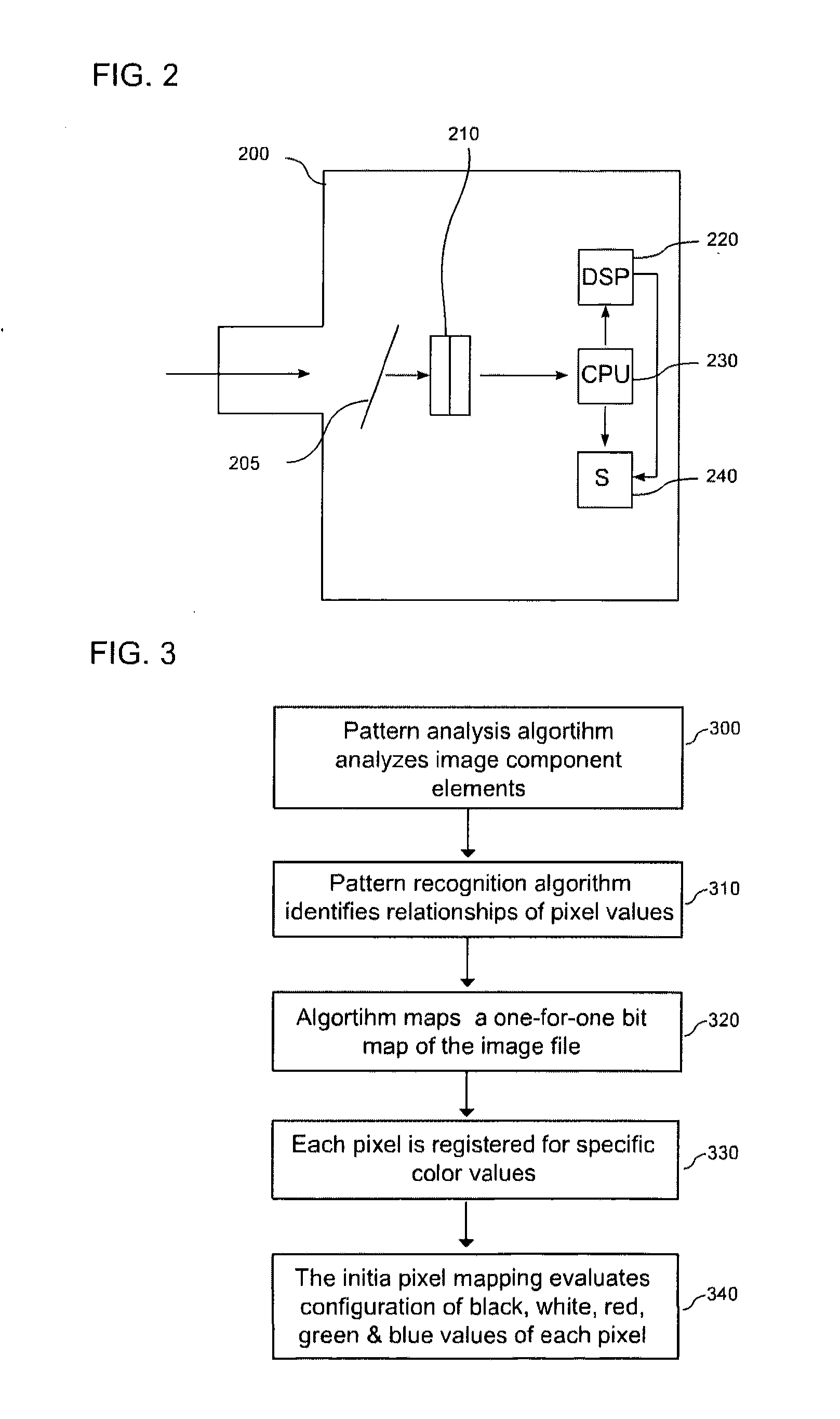Digital image and video compression and decompression methods
a digital image and video compression technology, applied in the field of compression and decompression of digital and video images and image files, can solve the problems of dramatic transformation of user work flow, achieve the effects of saving digital memory space and bandwidth efficiency in image file storage and transmission, removing unnecessary pixels, and increasing compression
- Summary
- Abstract
- Description
- Claims
- Application Information
AI Technical Summary
Benefits of technology
Problems solved by technology
Method used
Image
Examples
Embodiment Construction
[0039]The present invention describes a set of algorithms for compression and decompression of digital image and video files.
(1) Methods for Digital Color Image File Compression
[0040]The still digital imaging (SDI) compression algorithm has seven steps. First, the digital color image file is analyzed for its component elements. Second, only the black and the white image elements in the image file are compressed. Third, only the R-G-B color layers in the image file are compressed. Because the human eye has a limited range of color perception, the algorithm limits its color image analysis to ocular constraints. Fourth, the image data file is numerically converted. Fifth, the pixel blocks are organized and aliased to remove unnecessary pixels. Sixth, fuzzy logic is applied to the image file to compress the data set. This step has a small amount of lossy, that is, unrecoverable, data. Seventh, the file metadata is computed, including a key that tracks the compression process from the or...
PUM
 Login to View More
Login to View More Abstract
Description
Claims
Application Information
 Login to View More
Login to View More - R&D
- Intellectual Property
- Life Sciences
- Materials
- Tech Scout
- Unparalleled Data Quality
- Higher Quality Content
- 60% Fewer Hallucinations
Browse by: Latest US Patents, China's latest patents, Technical Efficacy Thesaurus, Application Domain, Technology Topic, Popular Technical Reports.
© 2025 PatSnap. All rights reserved.Legal|Privacy policy|Modern Slavery Act Transparency Statement|Sitemap|About US| Contact US: help@patsnap.com



